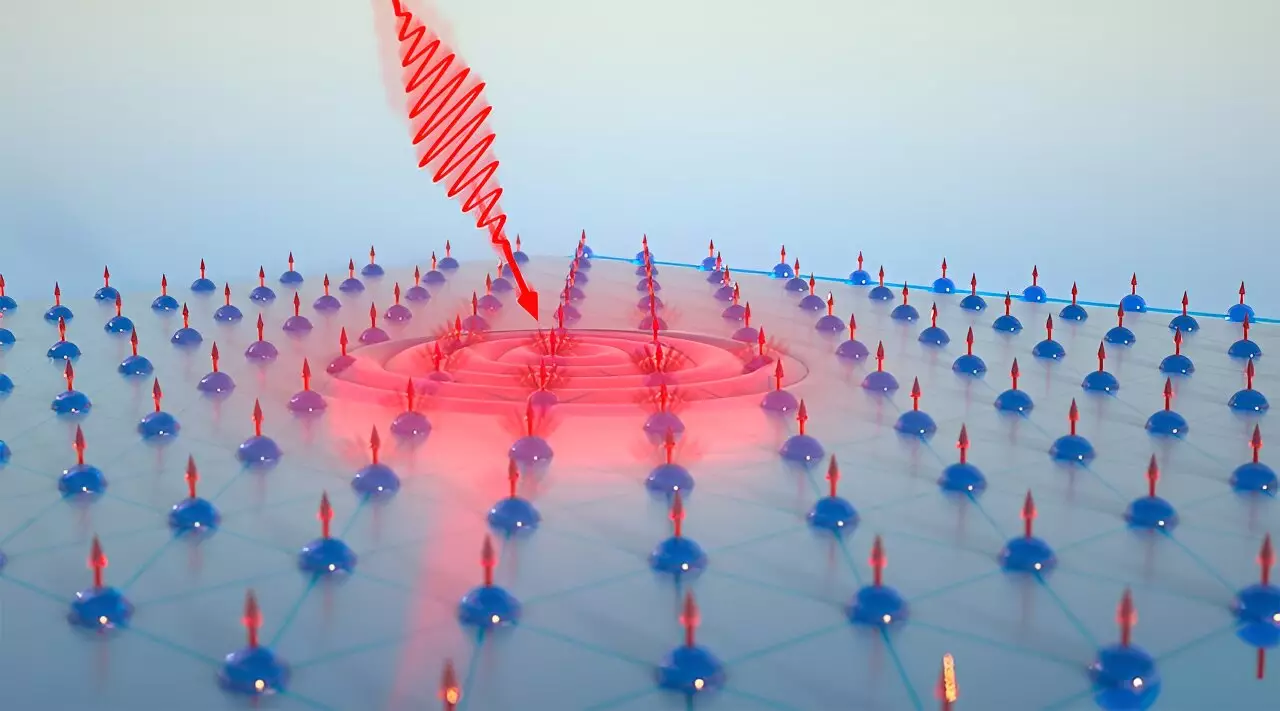Recent advancements in optical memory technology have the potential to reshape how we store and access computational data. A notable study from researchers at the University of Chicago’s Pritzker School of Molecular Engineering (PME) has revealed new properties of a compound known as manganese bismuth telluride, or MnBi2Te4. This innovative material exhibits rapid changes in its magnetic properties under illumination, suggesting that it could be harnessed for efficient data storage methods, potentially outperforming traditional electronic memory devices.
MnBi2Te4 has fueled scientific interest due to its characteristics as a magnetic topological insulator (MTI), a class of materials that possesses a unique combination of insulating behavior in bulk while allowing for conductive surfaces. These characteristics are fundamental to creating advanced technologies for both classical and quantum information processing. The excitement surrounding the material stems from its ability to support what are referred to as “electron freeways”—paths along which electrical currents can flow in a two-dimensional format—crucial for efficient quantum data transmission. However, experimental challenges had previously hindered scientists from fully realizing these properties in practice.
Researchers, led by Shuolong Yang, aimed to delve deeper into MnBi2Te4, focusing on understanding why this compound was not exhibiting previously anticipated topological features. In doing so, they sought to closely investigate the underlying electron behavior that could illuminate the path toward practical applications.
Employing state-of-the-art spectroscopy techniques, the research team was able to visualize the dynamic behavior of electrons in MnBi2Te4 on ultrafast time scales. They made use of time- and angle-resolved photoemission spectroscopy, a method that reveals how light interacts with electrons, to gather insights on how different states of electrons compete within the material. This was supplemented by magneto-optical Kerr effect measurements, which allowed for the observation of microscopic magnetic properties.
Through these innovative approaches, the researchers discovered a competing quasi-2D electronic state that interferes with the expected topological surface state. Interestingly, while this interference appeared detrimental to the material’s ability to function as a traditional topological insulator, it presented an alternative that may be advantageous for optical memory applications.
The research revealed a tight coupling between the newly identified quasi-2D electronic state and external light sources, laying the groundwork for potential applications in optical memory systems. Unlike more sensitive quantum information environments, this property aligns well with the functional requirements for a high-efficiency optical memory device. By employing lasers to manipulate the material, the researchers postulate that MnBi2Te4’s optical memory capabilities could vastly eclipse the performance of existing electronic storage solutions.
Yang’s team is now focused on utilizing lasers to explore these novel properties further, potentially unlocking a new chapter in memory technology that is defined by energy efficiency and rapid data retrieval. Not only does this hold promise for everyday computing devices, but it also heralds potential advancements in systems that rely on quantum computing.
As the team continues to experiment with MnBi2Te4, understanding the balance between its competing electronic states will be paramount. The prospect of tuning the interplay between the original topological properties and the newly discovered quasi-2D state could lead to breakthroughs that enhance both data storage and quantum information processing capabilities.
Ultimately, the research findings from the University of Chicago PME not only contribute to the broader understanding of magnetic topological insulators but also lay the foundation for transformative applications in the field of memory technology. This pioneering work illustrates the synergy between fundamental scientific inquiry and practical application, affirming the critical role that basic research plays in driving technological progress.
The developments surrounding MnBi2Te4 embody a promising shift toward more efficient, high-capacity optical memory solutions—a vital step in the ongoing evolution of data storage technologies.

